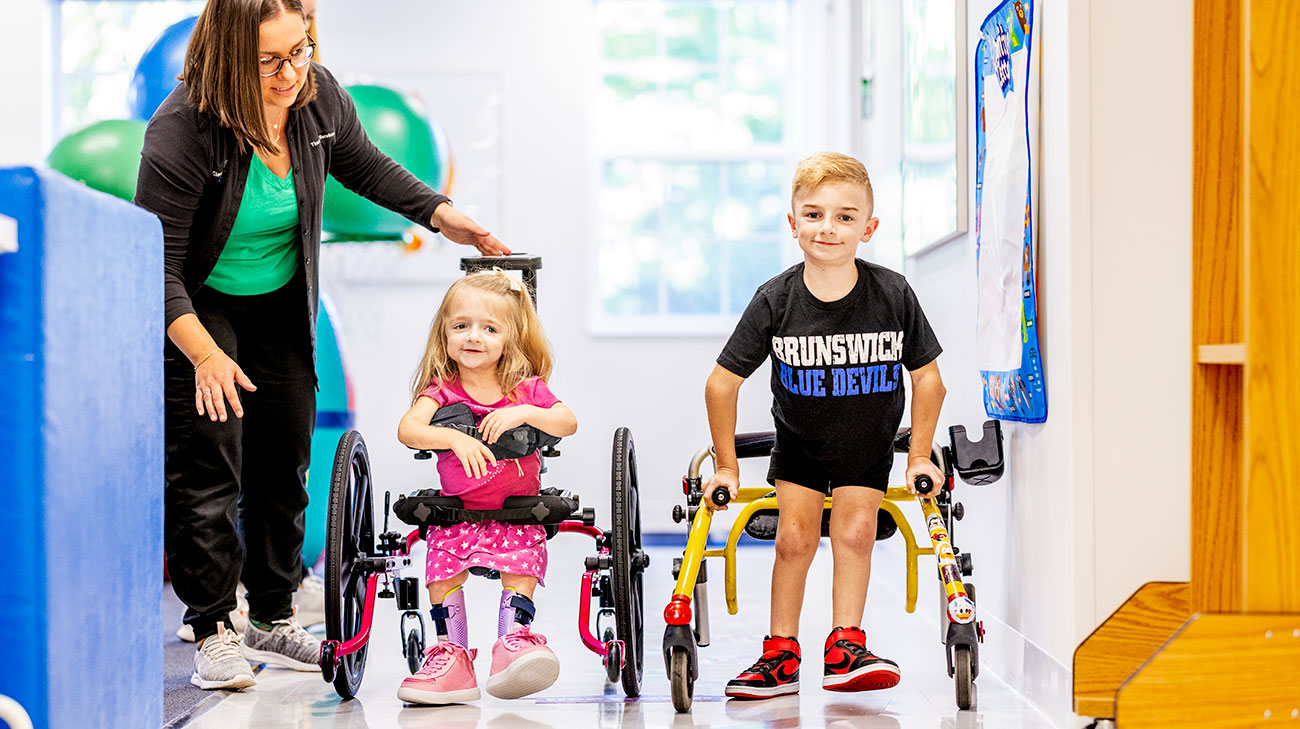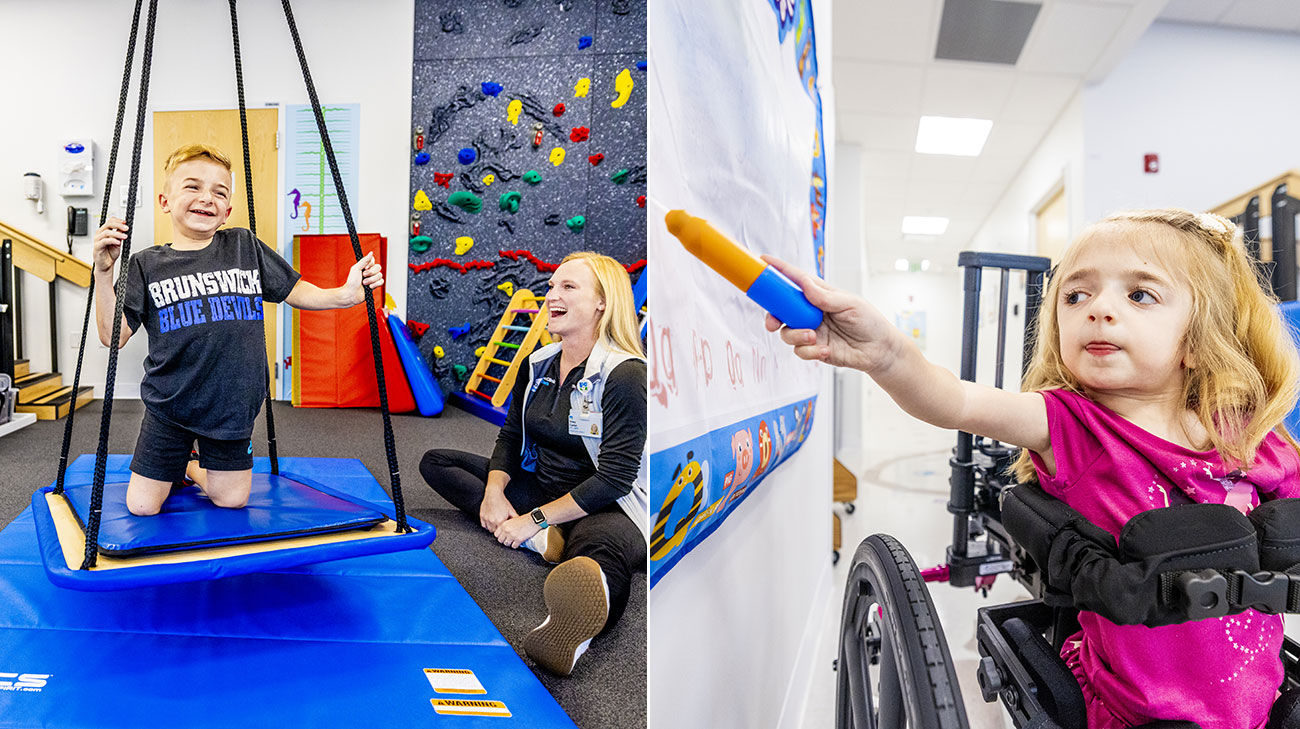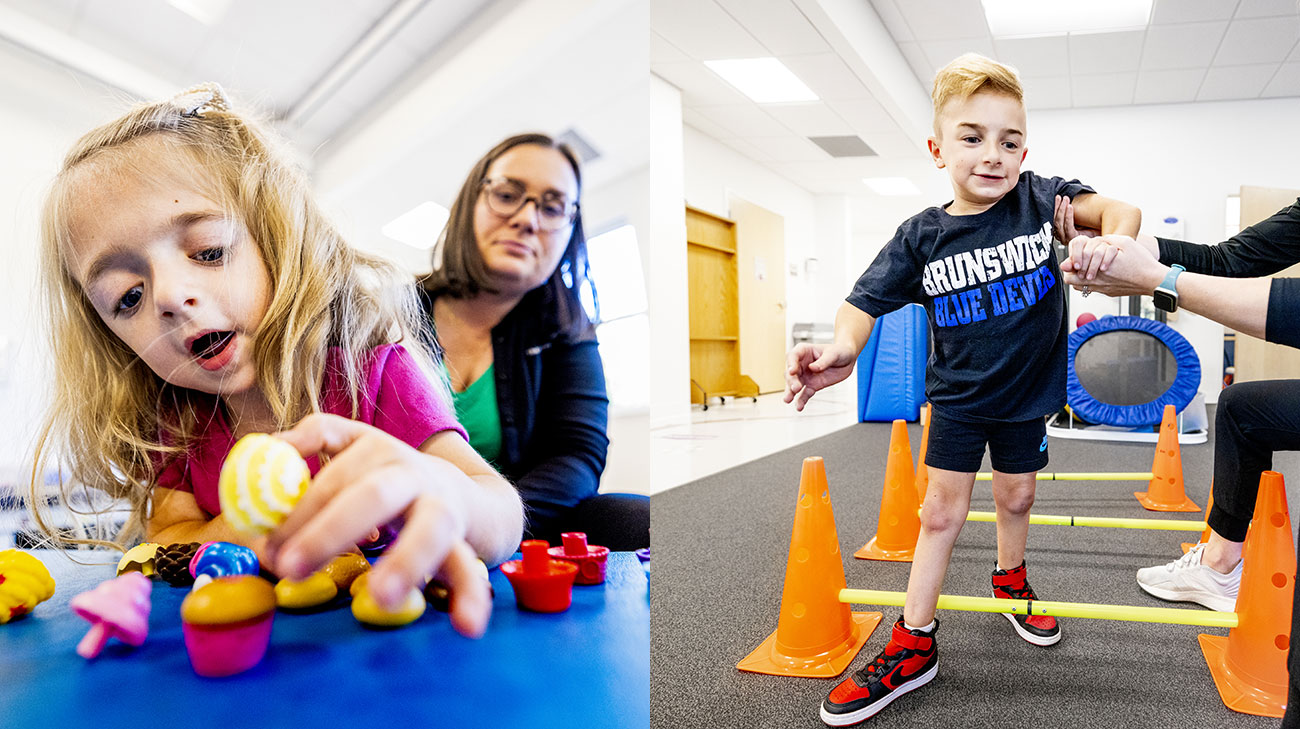
Two of Aaron and Stephanie Levandusky’s three children were born with osteogenesis imperfecta (OI), a rare genetic bone disease that affects about 1 in every 20,000 people. Also called brittle bone disease, babies born with OI have bones that break easily.
A routine ultrasound during their first pregnancy showed the baby measuring a bit short. With no other red flags, no one was overly concerned. But when the difficult delivery of their son Lucas left him with a broken arm, further testing led to a diagnosis of OI.
Told that it was highly unlikely they’d have a second child with OI, the Levandusky’s got pregnant again when Luke was 19 months old. Monthly ultrasounds showed everything was fine, and their daughter Caydence was born in 2014.
“We hadn’t ruled out having a third child, but we waited because Caydence was very active – we didn’t know what we were getting into with a typical kid,” jokes Stephanie. “Our third pregnancy just kind of happened in 2018. An ultrasound while the baby was in utero showed a broken femur. While concerned, we accepted that this would be our new life, again.”

Although baby girl Ava’s birth was an easy one, her OI is more severe than her brother’s. Today, at age 5, she’s about the size of a 2-year-old. She uses a power wheelchair when not at home, and can scoot on her bottom, but can’t climb onto the couch or stand. Luke, now age 12 and a seventh grader, was walking by age 5.
As they’ve grown, Lucas and Ava have received treatment at multiple hospitals that specialize in various aspects of OI. They both attend weekly pediatric physical therapy sessions at Cleveland Clinic Children’s Therapy Services in Medina, a program of Cleveland Clinic Children’s Hospital for Rehabilitation.
Riley Carter, PT, DPT, has been Luke’s physical therapist since 2021. When they first met, Luke was using a Y-bike for mobility and not really walking. Through the years, he has progressed to walking independently with some setbacks due to fractures or surgeries, including the placement of rods to strengthen bones.
“Our weekly sessions depend on how Luke comes in. Sometimes he uses his walker to walk. Others he is sitting on the seat of his walker and propelling the walker from a sitting position. The best days are when he comes in walking completely on his own. That is when I know that our hard work and patience is paying off,” says Carter.
Brandy Plas, PT, DPT, is Ava’s physical therapist. “Ava was my first patient with OI so I did a lot of research on her diagnosis. When I met her, she had just turned 2 and was super shy. It took several weeks, even months, to build rapport with Ava and gain her trust,” says Plas.
Ava has come a long way. She talks nonstop, sometimes yelling in the gym with excitement. While still cautious when asked to do something new, once Plas explains why, she’s eager to try.
Both therapists agree that having the siblings share their physical therapy appointments is motivating. Luke demonstrates how to do an activity, and together they encourage Ava to work hard to be big and strong like him.

Mom Stephanie doesn’t know how they managed to find physical therapists who work so well with her two very different kids. “Riley and Luke’s personalities matched from the moment they met. They joke around and tease each other – it’s a perfect fit,” she says. “Ava likes calm and gentle people, so she’s really attached to Brandy, who is very focused on what Ava needs.”
The goal is to increase strength, flexibility and range of motion. Both therapists have helped find assistive devices including braces, walkers and wheelchairs tailored to Luke and Ava’s specific needs, and work with them on exercises and transitions like those done by ‘typical’ kids, but in modified ways.
“We don’t want them to have to be in therapy forever – we wouldn’t be doing our job right if that were the case,” says Plas. “We’ll work to get them as mobile and independent as possible, then let them take a break from therapy and come back for more episodic care.”
Photos courtesy of Cleveland Clinic.
Related Institutes: Cleveland Clinic Children's

